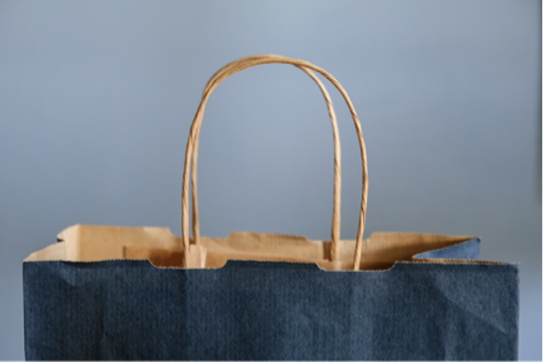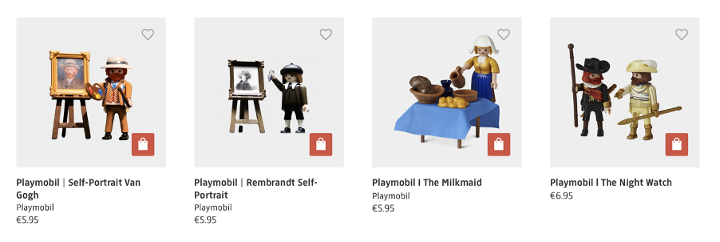Turning Visitors Into Customers: Maximising Retail Potential for Museums

Museum shops can and should be more than just walls of collection postcards and bins of branded pencils. With captive audiences, a link to the creative, and consistent footfall, shops in museums have ample opportunity to maximize retail potential by offering products that appeal to visitors and have a clear connection to collections.
This article will introduce a few ways to think differently about your existing museum shop or mind-map for the future if you intend to open one. Whether your shop is brick and mortar or existing online, the following methods will help to turn museum visitors into customers and maximise your shop’s retail potential.
The Three “Knows”
1. Know Your Visitors
Stocking your shop with items that aren’t geared towards your primary audience isn’t going to please your visitors or your bottom line. Read up on existing data about who is visiting your museum and/or carry out your own survey to help make informed inventory decisions. Do lots of families visit your museum? If so, be sure to stock lots of inexpensive and fun items for children. Does your museum cater more towards the design conscious? If this sounds like you, think about offering one-of-a-kind furniture and home accessories.
Think about why visitors are coming to your museum and how you can help them take home a tangible piece of that visit. A museum that does this brilliantly is The Mütter Museum in Philadelphia. Their eclectic shop takes cues from their eccentric collection complete with plush microbes and organs, plague doctor cookie cutters, teeth magnets and more. The Mütter Museum has focused on their primary audience and tailored their shop to maximise retail potential. “The museum store should always stock items that are a reflection of the visitor’s experience, “says Julia Jordan, Director of Retail Operations & Associate Director of Visitor Engagement for The College of Physicians of Philadelphia which includes The Mütter Museum. “It’s important to ‘visit’ your own museum frequently and see what stands out to you each time to make sure you’re covering all of the bases for any of your visitors” she adds.

2. Know Your Competition
The museum sector is a friendly one. Get to know peers working in shops at other museums and find out what they are offering and scope out their top retail strategies. Acquainting yourself with competitors within the museum field can help establish a baseline especially if you are opening a shop and starting from scratch.
Familiarise yourself with your local high street and shopping centres. Consider them your competition and investigate what their offerings are and who is included within their target audience. Many museum shops operate as independent boutiques that the public can access without a ticket. If your shop meets these criteria, be sure to think of local shops as your competition and stock your space with products that make you stand apart from the crowd.
3. Know Your Stock
Keep a record of every item within your museum shop and make a note of what is selling and what isn’t to determine future stock purchases. Question yourself along the way… What are the bestsellers? Which items are selling poorly? What is the plan to motivate sales or reduce stock? Museum shops should be responsive and nimble; able to go with the flow and react quickly to merchandise success and failures.
Along these same lines, it’s also important to know your stock well enough to create an optimal flow for your shop with a customer journey or floorplan. Enlist an impartial third party to visit your shop and feedback on their experience. Ask them to share details about how they navigated the space and what caught their eye. Use this feedback along with your visitor data to determine a dynamic layout for your space that draws visitors in and encourages them to take home unique museum shop items to remember their visit. Be sure to stock “easy sells” along the way like postcards, and items under $5.
Exclusivity
Offering items that are exclusive to your museum shop is a great way to create a sense of excitement and entice visitors to purchase memorable items. Many museums create items inspired by their collections which is ideal for offering merchandise that is unique and can be used by the customer to remember their visit.
Amsterdam’s Rijksmuseum collaborated with German toy manufacturer Playmobil to create a line of toys replicating art from the collection. Works by Van Gogh, Vermeer and Rembrandt are now available to take home in toy-form for under €7 at the Rijksmuseum brick and mortar shop as well as online.

Here are some ideas for offering items that are exclusive to your museum shop:
- Replicate popular paintings or prints from your collection using fabric products including scarves, tote bags, clothing, and tea towels.
- Work with a local artist to create artworks inspired by your collection. This is a great way to encourage creativity in your community and support local art.
- Partner with a manufacturer to recreate artworks from your galleries in a fun new way. Whether it’s toys like the Rijksmuseum or plague doctor dolls like the Mütter Museum, it’s a great way to offer visitors a tangible token of their visit!
Ringing It All Up
To quote a Chinese proverb, “To open a shop is easy, to keep it open is an art.” Investing time in curating and operating a space that is right for your visitors and organisation will pay off tenfold. Museum shops provide an opportunity to leave the visitor with a last impression of the organisation and take home something special and unique from their visit. Don’t let the opportunity to highlight your collection and maximise retail profits pass you by. Be sure to follow the methods highlighted in this article as a jumping off point to help step up your museum shop game.
